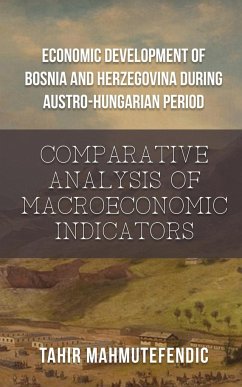The book consists of preface, introduction, six chapters and two appendixes. The first chapter deals with the last decades of the Ottoman rule in Bosnia and Herzegovina. The second chapter analyses interest of Austro-Hungary for Bosnia and Herzegovina. The third chapter gives the overview of literature of Austro-Hungarian period in Bosnia and Herzegovina. The fourth chapter is about methodology, and introduces formulae and equations used in the chapters which follow. They include calculating compound rates, formulae for doubling, tripling etc of certain variables, powers, logarithms, and formulae for discounting. The fifth chapter gives a detailed sectoral analysis of the economy of Bosnia and Herzegovina during Austro-Hungarian period. It starts with economic models and doctrines which the Austro-Hungarian authorities unwittingly applied in Bosnia and Herzegovina, and with the factors which determined the location of manufacturing industry in the country. The sixth chapter analyses economic development of Bosnia and Herzegovina during Austro-Hungarian period in a historical perspective. In-spite of regional and sectoral imbalances the overall results of the Austro-Hungarian rule in Bosnia and Herzegovina are impressive. Before the World War I Bosnia and Herzegovina was the most developed Balkan country and in European relations it belonged to middle-income countries. The first appendix analyses the position of Bosnia and Herzegovina in Yugoslavia. Bosnia and Herzegovina experienced a significant relative retardation in Yugoslavia. As a result its relative position sharply deteriorated compared to the rest of Yugoslavia and most of European countries. The second appendix evaluates Yugoslavia. The assessment has shown that Yugoslavia was politically and culturally successful, but economically unsuccessful project.
Hinweis: Dieser Artikel kann nur an eine deutsche Lieferadresse ausgeliefert werden.
Hinweis: Dieser Artikel kann nur an eine deutsche Lieferadresse ausgeliefert werden.








